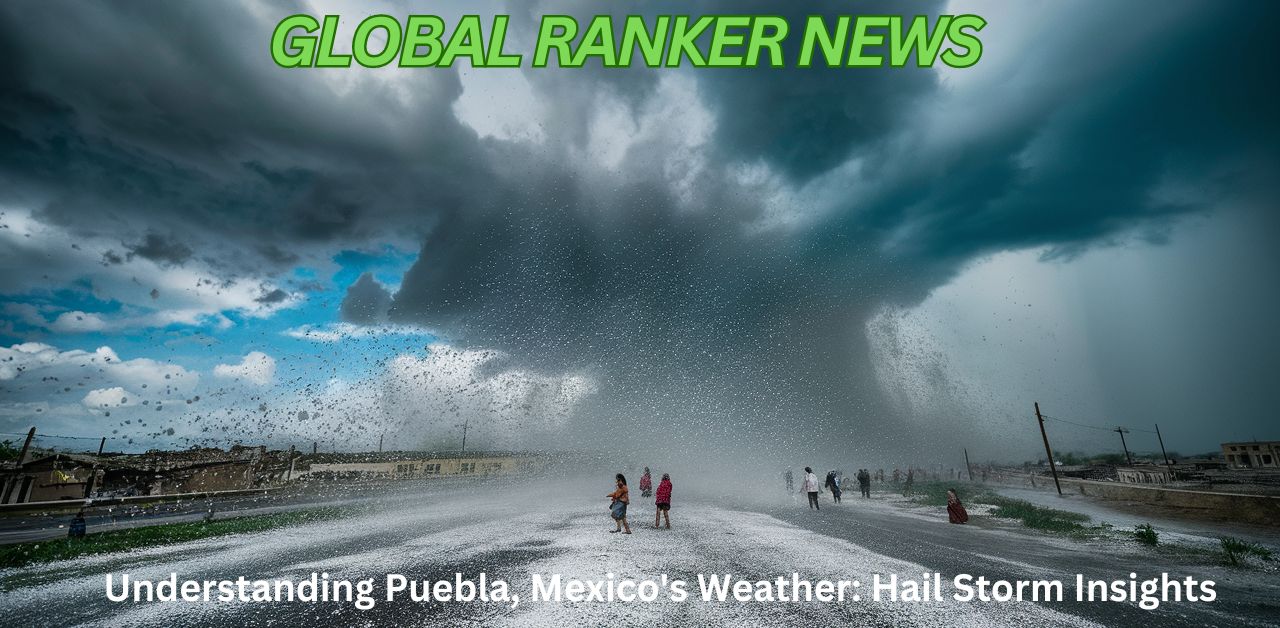Understanding the diverse weather patterns in Puebla, a city in Mexico, is crucial for both residents and visitors. This knowledge equips them to anticipate and prepare for various weather conditions, including hail storms, ensuring their safety and well-being.
Puebla’s Weather Overview
Weather wise, Puebla falls under the category of a moderate climate all year round. The climate of the city is moderate, with a range of temperatures that are neither too hot nor too cold, and experiences cold winter and hot summer seasons. Precipitation is directly affected by rainy seasons, which in this region are from May to October. This period of time is also characterised by hail storms, thus the name Hail storms.
What Causes Hail Storms in Puebla?
Thus, they are mainly associated with thunderstorms, frequent in Puebla. This occurs when the warm and moist air mass is lifted rapidly high in the atmosphere. Given that parts of the gale envelope the sky elevating, they cool and gain moisture to be transformed into ice pellets. These pellets increase in formation and size, and at one point, they drop as hail.
Frequency of Hail Storms in Puebla
While hail storms are not a daily occurrence in Puebla, they are experienced several times a year. It’s important to be aware that these storms can occur in different areas and at varying frequencies, prompting caution and preparedness.
Impacts of Hail Storms on Puebla
Hail storms, as we know, can significantly damage vehicles, homes, and crops. The economic impact is substantial, particularly for those who rely on crops for food and income. This underscores the importance of seeking expert advice and implementing preventive measures to avoid hail disasters.
Preparation Tips for Hail Storms
- Protect Your Vehicle: When you reach your destination, park your car in a garage or under a strong roof.
- Secure Outdoor Items: Please return any objects from balconies or yards not affixed to the building.
- Stay Indoors: Hail forms from hail storms, and it is dangerous to be outside. To be hit by the falling hail, a person should stay inside.
- Cover Windows: For window protection, one has to use either the shutters or the plywood to avoid breaking the windows.
Emergency Response During Hail Storms
To say the least, one should never let their guard down when hail is involved, and this is all the more reason one needs to get updated during a hail storm. Tune in to weather reports on the radio or TV and obey the directives of relevant officials. It is also helpful if a separate and stocked emergency kit is available with supplies of water, food, and some medical items.
Conclusion
Puebla, Mexico, experiences various weather conditions, including hail storms. Understanding the causes and impacts of these storms can help residents and visitors prepare adequately. By taking preventive measures, the damage caused by hail storms can be minimized.
Preparing for severe weather events is essential for ensuring safety and reducing economic losses. Stay informed and ready to act when hail storms strike.
FAQs
1. What extent is the location against hail storms in Puebla?
Hailing is rife in Puebla, with hail storms occurring slightly more than twice a year, though this depends on the season.
2. If a hail storm is imminent, what should I do to my car?
To prevent damage to your car, you should ensure you park it in your garage or, if that cannot be done, under a sturdy shelter.
3. Can I prevent hail in my house?
It is advisable to tie furniture and other items that can be easily carried outside, darken the windows with shutters or plywood, and have an emergency kit with water, food, and medicine.
4. What would be the way to live update during a hail storm?
Get information from weather services and avoid driving if a hail storm is in the forecast or has already started.
5. What economic effects can hail storms bring about in Puebla?
Hail storms can destroy crops, autos, and other structures, posing a huge economic loss, especially to growers and people involved in open activities.

